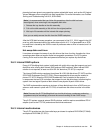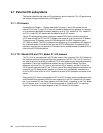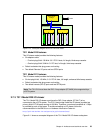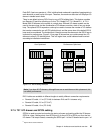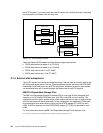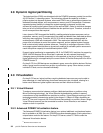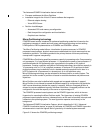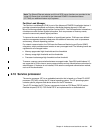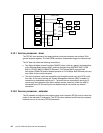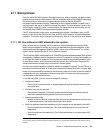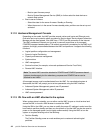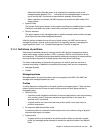
Chapter 2. Architecture and technical overview 39
The Advanced POWER Virtualization feature includes:
Firmware enablement for Micro-Partitions
Installation image for the Virtual I/O server software that supports:
– Ethernet adapter sharing
– Virtual SCSI Server
Partition Load Manager
– Automated CPU and memory reconfiguration
– Real-time partition configuration and load statistics
– Graphical user interface
Micro-Partitioning technology
POWER5-based servers introduces an enhanced partitioning model that is based on the
partitioning concepts of a stable and well-known mainframe technology and on existing
LPAR/dynamic LPAR implementation on POWER4 and POWER4+ servers.
The Micro-Partitioning model offers a virtualization of system resources. In POWER5
processor-based systems, physical resources are abstracted into virtual resources that are
available to partitions. This sharing method is the primary feature of this new partitioning
concept and it happens transparently.
POWER5 Micro-Partitioning specifies processor capacity in processing units. One processing
unit represents 1% of one physical processor. 1.0 represents the power of one processor. A
partition defined with 220 processing units is equivalent to the power of 2.2 physical
processors. Creating a partition using Micro-Partitioning technology, the minimum capacity is
10 processing units, or 1/10 of a physical processor. A maximum of 10 partitions for each
physical processor may be defined, but on a loaded system the practical limit is less. In a
p5-570 system with 16 processors in a shared pool, up to 160 partitions using
Micro-Partitioning technology can be activated at the same time for an entire system. The
practical limit to the number of partitions is based on available hardware and performance
objectives.
Micro-Partitions can also be defined with capped and uncapped attributes. A capped
Micro-Partition is not allowed to exceed the defined capacity (a configuration flag inside the
HMC menus determines whether the capacity is capped), while an uncapped partition is
allowed to consume additional capacity with fewer restrictions. Uncapped partitions can be
configured to the total idle capacity of the server or a percentage of it.
The POWER5 processor-based systems use the POWER Hypervisor, which is the new
Hypervisor for executing the Micro-Partition model. The Hypervisor of existing POWER4
processor-based systems works on a demand basis, as the result of machine interrupts and
callbacks to the operating system. The new Hypervisor operates continuously in the
background.
The Advanced POWER Virtualization Feature, which is described in 2.9.2, “Advanced
POWER Virtualization feature” on page 38, facilitates all POWER5 and POWER Hypervisor
enhancements to reach the highest level of granularity of installed system resources.
Figure 2-15 shows the POWER5 partitioning concept.



